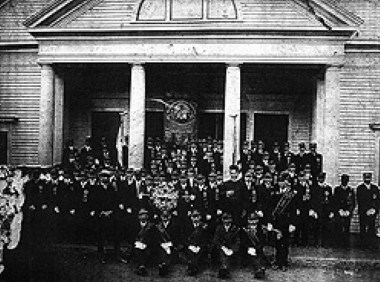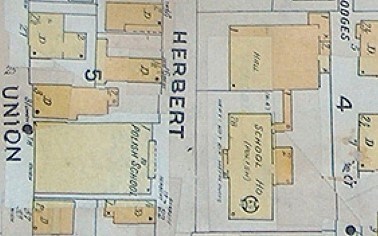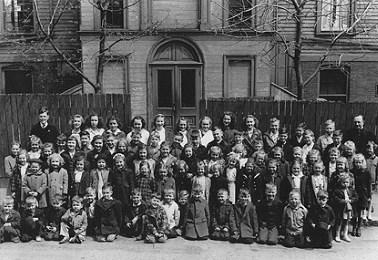Part of a series of articles titled Salem's Polish Community.
Article
Salem's Polish Catholic Church and School

NPS Photo
Ethnic parishes and schools were a cornerstone of most Polish immigrant communities in late nineteenth and early twentieth century America, although there was intense debate about how central a role Catholicism played in Polish identity, and how Polish Catholic parishes should relate to the Irish-dominated American Catholic Church.
Poles in Salem initially worshiped in the basement of an Irish church, but a campaign to build their own church, spearheaded by the St. Joseph Society, quickly raised funds to buy land a block away on Herbert Street. The c. 1903-1909 photo shows members of the Society on the steps of their newly-erected church, with Father Joseph Czubek, the first parish priest, in front of the pillar on the right.

Essex County Registry of Deeds
The rapidly-expanding community seems to have outgrown its new church quite quickly. The parish bought a former Baptist church building on St. Peter Street, outside the Derby Street neighborhood, which they renovated and began using in 1909. This allowed the parish school, established in 1908 and originally housed in the church basement, to expand.
Eventually, St. John the Baptist School incorporated two older existing school buildings across the street (marked "School Ho." on the 1938 Salem map) as well as a house that served as a residence for the Felician nuns who taught at the school.

Courtesy of Linda Moustakis
In the early years, mornings were spent learning about religion and Polish history and language, with afternoons devoted to American history and English grammar.
Over time, parochial schools emphasized the Polish language less, responding to many parishioners' sense that seeing their children and grandchildren thrive in English-speaking America was more important than holding onto a language that was itself somewhat foreign to immigrants who had grown up speaking various regional dialects of Polish.
The Polish church on St. Peter Street continues to operate as a distinct ethnic parish in Salem, but the parish school closed its doors in 1977, in an era of declining enrollments throughout ethnic parochial school systems.
Former students spoke of the strict discipline, the memory of learning Polish words and phrases, and the way the school served multiple functions in the community. One woman said, “It was funny, when my mother was older, I would make her laugh, because I would talk to her in Polish! And all I remembered was some of the crazy things from the workbook, you know, so I’d say silly things like, ‘Evalina ma rybky,’ which means ‘Evaline has fish’!”
Last updated: August 27, 2021
